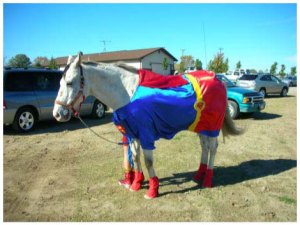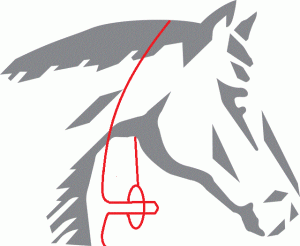My first comment on irishhorseygirl was on my second post. I have to say I was genuinely delighted that I recieved it and therefore I decided to dedicate this 2 part post to Katyk . She has been having troubles finding a saddle for her horse and it really gave me inspiration to write this post. The saddle fitting problem kept me up until half 1 that night which I can only imagine was only a tester of the sleepless nights shes had over her horse and I realized how little I actually knew about saddle fitting so I did a little research 🙂
So what is the perfect saddle?
While chatting to a woman who wholesaled equestrian products at a show, she informed me one of her lines was with Jaguar Saddle and she explained to me the perfect saddle is not just to fit the horse but also the rider. It is similar to wearing shoes. To achieve optimal performance the horse and rider both must be balance. If they are too small or big it will negatively affect your daily performance. Therefore it must firstly fit the horse. The rider however must be put into a position that is both comfortable and will enhance your position for that discipline therefore improving your performance. An ill fitting saddle to the riders body structure will only work against you pushing you into a position that will make the rider unbalanced and therefore unbalance the horse.
The Horse Fitting
The most obvious difference from the horses fit is the width of the tree, but this is only the beginning. Going into greater detail you can differ in flap length, twist, seat width, thigh rolls or blocks, seat depth, stirrup bar placement, and you may even have third billet strap. The horse is the primary concern and it may not be as simple as finding saddle with a certain size. The width of a saddle is usually denoted by the letters N (narrow), M (medium), W (wide) and XW (extra-wide). These graduations can also be shown numerically by the numbers 2,3,4,5. Some English saddle tree manufacturers will make trees in MW (medium-wide) and NM (narrow-medium) graduations, whereas other European trees may come in centimetre graduations, which can be confusing as different manufacturers use differing means of measuring tree widths. For example, Prestige offer width fittings from 28cms to 37cms., Stubben offer width fittings from 27cms. to 32 cms, and Amerigo define their width fittings as +/- half a centimetre either side of Medium. In other words, ‘Medium’ may not be the same width measurement from one saddle maker to another and ‘33 cm’ may not be measured from the same points on the saddle from one company to another. Some saddles may be ruled out due to the horses conformation such as a particularly short back or the height of the withers. Saddle flocking need to be adjusted for horse with a club foot because of differences in musculature development in each shoulder. Horses that have a stiff and hollow side will have more muscle on the stiff side and less on the hollow side and will need more flocking on the hollow side to provide support for the saddle until the muscles are properly developed and equal sided flexibility is achieved. Any chronic back problems, current soreness, how much and where the horse lifts his back, and how much does the rider get the horse to use his back are also issues for proper flocking and therefore proper support for the saddle and comfort for the horse. Flocking needs to be reassessed as your horse matures and the musculature changes. Even the air support saddles need to be maintained regularly. If your horse is young and still developing, or your horse is coming back from an injury and the saddle needs will be changing, or you want a trial period prior to buying a saddle, you might consider renting a saddle. When trying on a saddle remember:
1. There should be no restriction of the horse’s shoulder blade when in movement… the points of the saddle should sit an inch or two behind the shoulder blade to allow for it’s rotation.
2. Discomfort and restriction of movement will be caused by the back of the saddle sitting behind the last rib. The weight of rider and saddle cannot be supported beyond this point on the horse’s back.
3. Front arch of the saddle should have adequate clearance over the withers, and not be tight laterally so as to ‘pinch’ the withers. As a rough guide, with a seated rider there should be at least 2 fingers’ width vertical clearance between the horse’s wither and the underside of the arch of the saddle.
4. The central gullet of the saddle panel (underside) must ALWAYS maintain sufficient clearance above the horse’s spine. Not having full clearance here can have dire consequences to the comfort and well-being of the horse, as sores, bruising, discomfort and, at worst, damage to the vertebrae can be caused by direct pressure here.
5. Any pinching of the spinal areas of the horse’s back caused by a ‘too narrow’ gullet can also cause soreness, soft swelling and discomfort which will again detract from the horse’s ability to move freely and happily.
6. You need to be sure of all the points listed above, and that the saddle sits comfortably with an even bearing surface at the front and the rear, and that the balance of the saddle is correct (as detailed above).
This is only half of the information I found. It honestly was exhausting researching this topic and I dread to think what horse who don’t have “normal” saddle confirmation go through to find a saddle that fits. So heres my question of the day:
Have you ever been amazed at how much information is out there on a particular horsey topic that you knew very little about? What was it? And what influence your research?
Lots of love,

![]()



